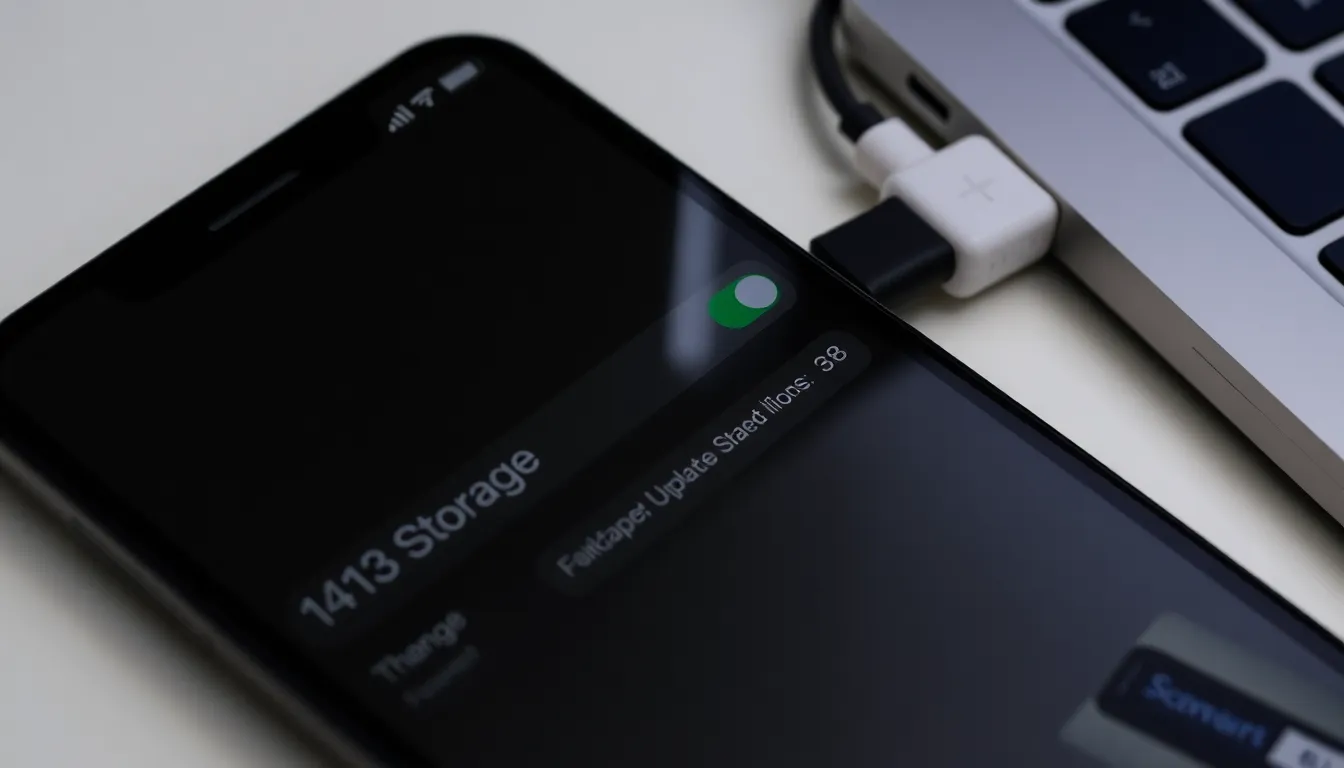Ever found yourself staring at your iPhone, watching that dreaded update bar inch along at a snail’s pace, only to have it crash and burn? You’re not alone. Many users face the frustrating reality of failed updates, and it can feel like your phone’s playing a cruel joke on you.
Table of Contents
ToggleCommon Reasons for iPhone Update Failures
iPhone users often face update failures for several reasons. Understanding these common issues can help in troubleshooting effectively.
Insufficient Storage Space
Insufficient storage space frequently causes update failures. When iPhones lack enough space, they can’t download or install updates. Typically, iPhones require at least 1.5GB of free storage for updates. Users should check available space by navigating to Settings, then General, and finally iPhone Storage. Regularly deleting unused apps, photos, or videos can free up space. Managing storage diligently can prevent future issues and ensure smooth updates.
Poor Internet Connection
A poor internet connection often leads to failed updates. Slow or unstable connections hinder the download process. Users should connect to a reliable Wi-Fi network with a strong signal for optimal results. Checking the internet speed can aid in identifying connectivity problems. Restarting the router or moving closer to it can sometimes resolve issues. When the connection stabilizes, updates typically progress without interruption.
Software Glitches
Software glitches can interfere with the update process. Sometimes, bugs or previous update failures create conflicts. Restarting the iPhone can resolve minor glitches. If issues persist, users might consider performing a software reset. Keeping the iPhone’s software up to date can prevent many glitch-related problems. Regular updates help maintain device stability and performance, decreasing the likelihood of future failures.
Troubleshooting Steps

Troubleshooting update failures on an iPhone requires several straightforward strategies. Following these steps can lead to successful software updates.
Restart Your iPhone
Restarting an iPhone often resolves temporary glitches. Users should hold down the power button until the slider appears, then slide to power off. Wait at least 30 seconds before pressing the power button again to turn it on. Restarting gives the device a fresh start, possibly fixing underlying issues that cause update failures.
Check Storage Availability
Checking storage availability is crucial for successful updates. An iPhone typically needs at least 1.5GB of free space for upgrades. Users can navigate to Settings, then choose General, and finally tap on iPhone Storage to view current usage. Should there be insufficient space, removing unused apps, photos, or videos can free up necessary storage. Regularly monitoring storage helps prevent update interruptions.
Use a Wired Connection
Using a wired connection can enhance download stability during updates. Users might consider connecting an iPhone to a computer via a USB cable. This method ensures a reliable internet connection, especially in areas with weak Wi-Fi signal. Once connected, users can update their iPhone through iTunes or Finder for more consistent results.
Alternative Update Methods
Users can explore alternative methods if their iPhone updates keep failing. Two effective options include using iTunes and the over-the-air update feature.
Update via iTunes
Updating via iTunes provides a reliable method for users facing persistent update issues. Start by connecting the iPhone to a computer using a USB cable. Launch iTunes and select the device icon in the upper-left corner. Next, click on “Check for Update.” If an update is available, follow the prompts to download and install it. This method often bypasses problems related to Wi-Fi connectivity and storage space, ensuring a smooth installation process.
Use Over-the-Air Update
Over-the-air updates serve as a convenient alternative. Users can simply go to Settings and tap on General. From there, selecting Software Update allows them to check for available updates. When an update appears, tapping “Download and Install” initiates the process. A strong Wi-Fi connection enhances this method’s effectiveness, reducing the chance of interruptions during the download. This approach allows users to install updates directly on their devices without the need for a computer.
Preventing Future Update Issues
Preventing update issues requires proactive measures and attention to device health. Users can implement regular maintenance and stay current with iOS updates.
Regular Maintenance Tips
Regular maintenance contributes significantly to iPhone performance. Ensuring adequate storage space is vital; at least 1.5GB should remain available for updates. Cleaning up unused apps or files regularly enhances storage efficiency. Systematic reboots can resolve minor software glitches. Keeping the device clean and free of dust helps maintain connectivity, particularly around charging ports and buttons. Monitoring battery health also plays a key role; a healthy battery ensures optimal performance during updates.
Keeping iOS Up to Date
Keeping iOS current is essential for security and functionality. Users should check for updates in Settings at least once a month. Enabling automatic updates simplifies this process; the iPhone installs updates overnight while charging. Setting reminders for manual checks ensures no important updates are missed. Recent updates often fix bugs and improve system stability, reducing future failures. Adapting to the latest iOS version also maximizes compatibility with new apps and features. Ensuring a reliable Wi-Fi connection during updates significantly eases the process.
Experiencing update failures on an iPhone can be frustrating but understanding the underlying causes can make a significant difference. By addressing factors like storage space and internet connectivity users can often resolve issues swiftly. Utilizing alternative update methods such as iTunes can also streamline the process.
Regular maintenance and proactive measures ensure smoother updates in the future. By keeping the device organized and monitoring its performance users can avoid many common pitfalls. Staying informed and prepared is key to enjoying a hassle-free iPhone experience.




